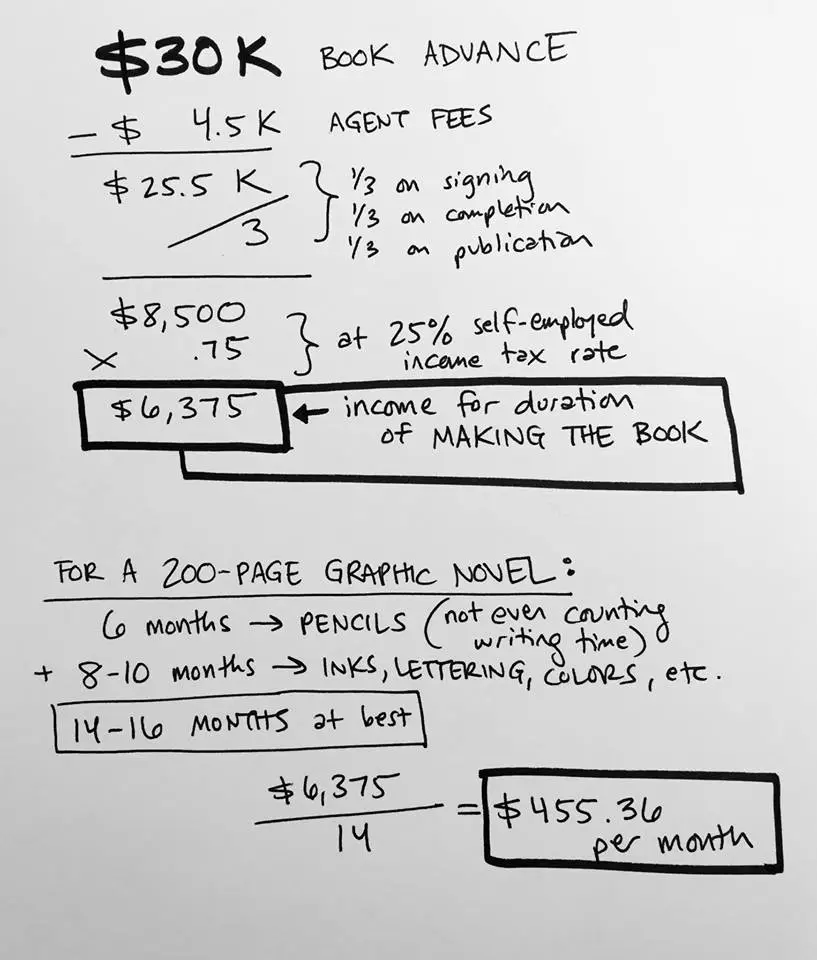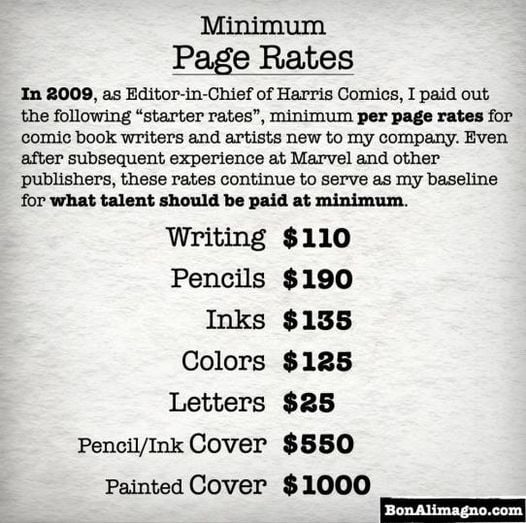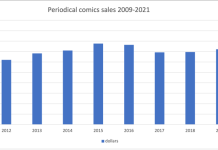We’ve written here many times over the years about how hard it is to make a living making comics, and, specifically, how page rates for basic comic book labor have not increased in the last 20 years or so.
The page rate discussion is usually led by averages, surveys and memories.
And now, former Harris Comics editor in chief Bon Alimagno has laid out some actual numbers from 2009 on Facebook and elsewhere.
He writes:
Let’s get into it. PAGE RATES. Focus has been on either extreme top end rates, or trying to capture every possible rate. Most helpful though is knowing a publisher’s minimum or “starter” rates. Starter rates represent a company’s values.
Starter rates are like a minimum wage, just not enforced by law. As such, it’s a signal for how publishers value talent. At what point is the pain of paying someone less not worth it to a company? The lower the starter rate, the more a company thinks ANYONE is replaceable.Starter rates become weapons. As publishers stop hiring or re-signing talent above starter, the more that rate becomes normalized as the rate EVERYONE gets, not just new talent. Veteran talent gets guilted/coerced to lower their rates toward starter since now it’s the norm.The starter rate then gets lowered — a lowering tide, lowers all boats, and the publisher has reduced talent cost across the line. Other publishers see this and start lowering their own rates (starter and above) even more. And on and on, a death spiral of pay across publishing.Agree or disagree with the numbers I’ve posted. They are too low in 2023 even for starter, but this is what I paid out at minimum in 2009. If I could do that back then then why can’t a publisher do that today? Is it because they lack the revenue? Or is it because of their values?
But the thing I want everyone to come away with is establishing that writers and artists shouldn’t be grateful to receive just any rate. They should receive a rate that grants them dignity and humanity. Don’t beg. Make them beg.
(In case you’re wondering, Harris Comics was a holdover from a newsstand publisher of the 70s who acquired the Warren Publishing catalog in the 80s. They were best known for publishing the adventures of Vampirella, and were acquired by Dynamite in 2010.)
This led to some commentary on Facebook from artist Jamal Igle:
Stolen from @Bon Alimagno, If you can’t meet these minimum rates and have corporate backing, just don’t publish.
and colorist Chris Sotomayor:
These were minimum rates from a mid-tier publisher, almost 15 years ago. I know not every publisher can pay these rates, and I understand how different the market it, but there are definitely publishers that can pay these rates, and don’t because these jobs have been successfully devalued in many ways.
There is a lot of lively commentary in the comments on both posts but it’s mostly that 15 years later, the people posting on FB WISH they could be paid these rates. In many cases, people’s page rates have gone DOWN, while the cost of everything else has gone, up, up, and away.
Using the good old government inflation calculator, the scripting rate, for instance, of $110 in 2009 would be $160 in 2023.
Alimagno posted his rates on BlueSky as well, and there was lively commentary there. One observer/publisher/creator noted that adding it all up the cost of a 22 page comic would be about $12,000, a cost few direct market publishers could pay. You would need to sell about 11,000 copies to cover creative, printing and production costs, and “not many non-big two books hit those numbers in the current market.”
Of course this brings us back to our quest for sales charts.
A recurring theme in the commentary is that these Harris Era rates is that veterans like Sotomayor and Igle expect publishers with corporate backing to pay these rates, not small indie publishers.
But the reality is that Marvel’s rates have gone DOWN in recent years, as a way to be more profitable in the growth-driven times we live in.
Just how much they went down isn’t a number I have access to, but Creator Resources has a rates database which you can search for by publisher. It doesn’t really give us any more than a snapshot, since the rates vary quite a bit.
Besides regular page rates not keeping pace with inflation, it’s also a given in the industry that certain top folks will make very high rates. I believe Frank Miller got a sky high page rate when he came back to DC for Dark Knight 3. And of course, there’s Mark Millar’s recent claim that he made $1000 a page before royalties.
It’s crass to talk money, but it’s also shocking that the people writing and drawing the top books are earning a FRACTION of what my peers and I earned on those titles 15 years ago. I made $1,000 a page plus royalties, but I’m hearing from guys on $90 a page and that’s criminal.
I’ve had a few people privately question this number but Millar could have had bonuses or some other kind of arrangement that boosted his rate.
When you get to a certain level, some people in comics CAN make a decent living at it. But it’s very few.
There’s also Millar’s idea to start paying a 50% royalty in order to get top names back to Marvel to save the Direct Market, but I’ll have to address that in another post.
What about the other side of the chart, graphic novels and book publishers? Pre-pandemic, word on the street was that six figure advances for kids comics (the best selling genre, aka Dog Man) were happening. Some flops and a glut of kids books drove those down, but I’m hearing they may be on the rise again.
But a $100K advance for a graphic novel – which can take more than a year to complete – is still as rare as Millar-level page rates.
I’ve actually had this tab open in my browser for months waiting to write about it and I guess the time is now. In 2019 The Daily Cartoonist rounded up some numbers including this from Nate Powell. I can’t find his original post, but it must have been from his blog. It was a breakdown of a $30,000 graphic novel advance:

This came up again a few months ago on Mike Lynch’s blog, and as he noted, this is not a nobody, this is Nate Powell, the first cartoonist to win a National Book Award, March, always working Nate Powell, who works out a $30k advance to be income of $455 a month for more than a year. And $30k is a pretty generous book advance for a small, indie graphic novel.
The reality is, even pretty low page rates – like $100 a page for drawing a comic – comes out to way more than $455.36 a month if you can keep up any rate of speed – a book a month (not a typical page rate) would be $2200.
It’s part of the reason that serialized comics – periodicals – remain a desirable gig. It’s also why recent anxiety over the DM – home of the serialized periodical comic – have affected so many people.
We’ll be digging into more comics economics in the coming weeks. If you have any BTS info to share, you can always email us. In the meantime, there are many many excellent resources for creators at Cartoonist.Coop, and more organizing going on behind the scenes. The discourse continues.









Thank you for such an informative article!
Just like any job in the entertainment/publishing industry’s. Put asses in the seats and you will be rewarded.
This is a large reason why most of DC’s current art is being done by Europeans, as American artists have realized they can make more money by doing commissions from fans who remember them from “the old days” of the ’00s.
Comments are closed.